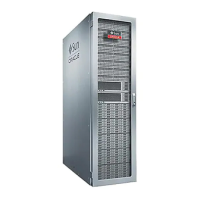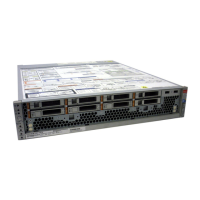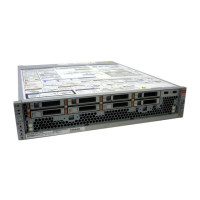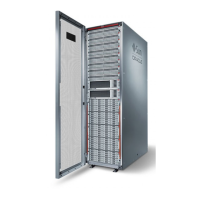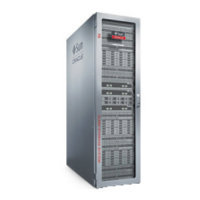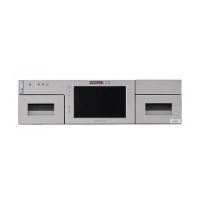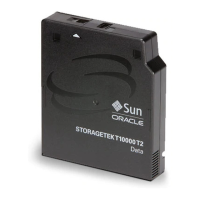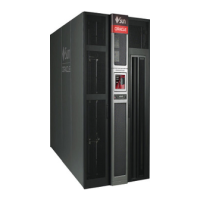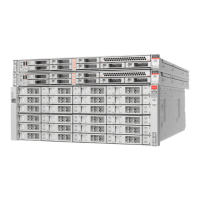Replacing a 7x20 DIMM
To identify a specific memory module that has faulted, you must open the storage controller
and use the amber status LEDs on the motherboard. To identify a general memory fault, go to
the Maintenance > Hardware screen of the BUI, and click on the right-arrow icon on the
controller. Then click DIMMs to locate the faulted component, indicated by the warning icon
.
1.
Power off the storage controller as described in “Powering Off the
Controller” on page 50.
2.
Disconnect the AC power cords from the rear panel of the storage controller.
Caution - Because 3.3 VDC standby power is always present in the system, you must unplug
the power cords before accessing any cold-serviceable components.
3.
Extend the controller from the rack as described in “Extending the Storage
Controller from the Rack” on page 51.
4.
7120 or 7320: Components may differ slightly between the 7120 and 7320,
however service procedures for each are identical. The illustration shows the
7320 controller. To remove the top cover:
a.
Unlatch the fan module door, pull the two release tabs back, rotate the fan
door to the open position and hold it there.
b.
Press the top cover release button and slide the top cover to the rear about
a half-inch (1.3 cm).
c.
Lift up and remove the top cover.
Servicing the 7x20 Controller 185
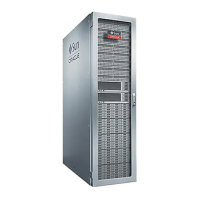
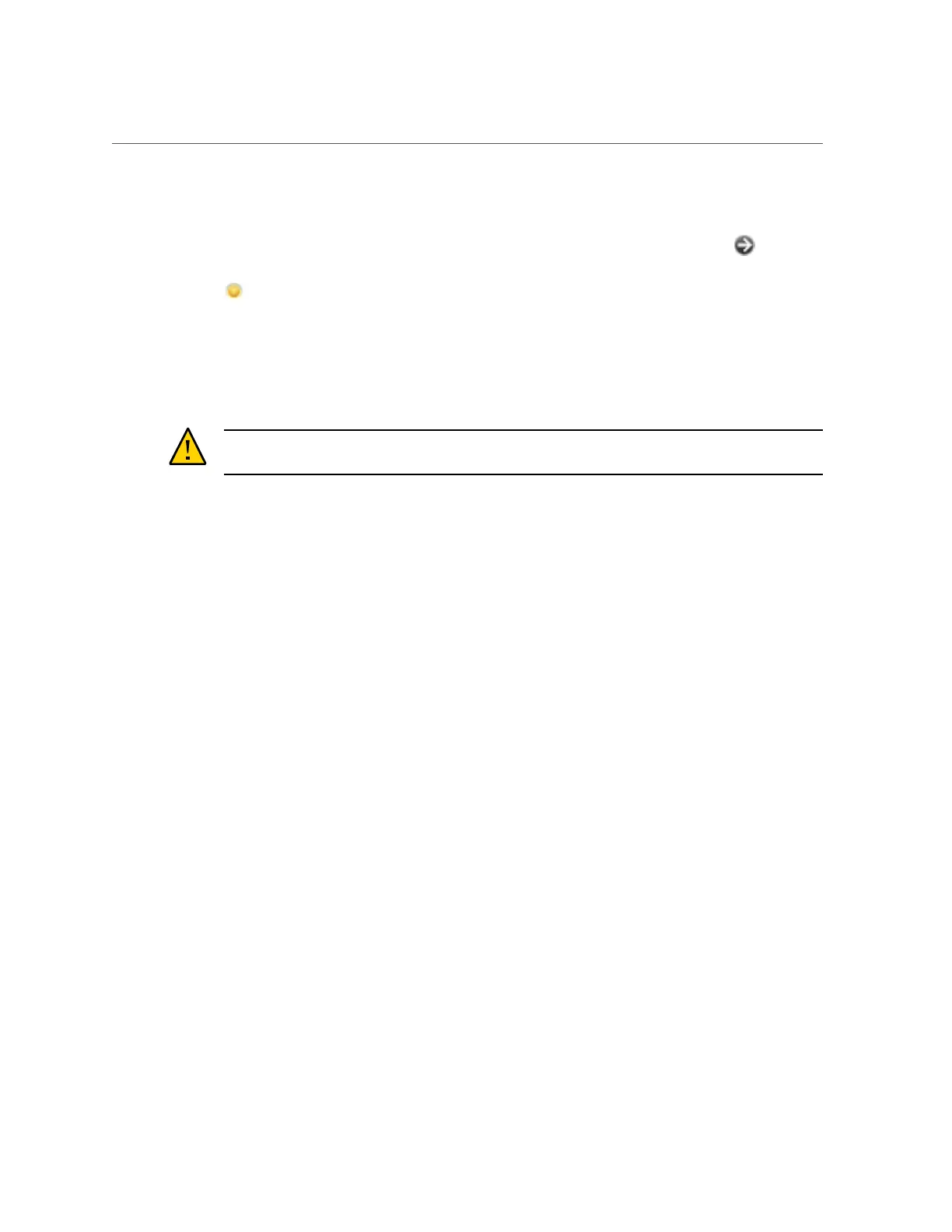